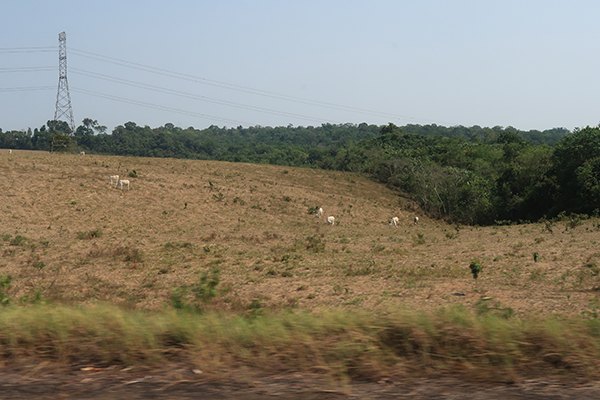The Amazon rainforest, the world's largest tropical rainforest, plays a crucial role in regulating the global climate. Absorbing about 220 million tons of CO2 annually, it acts as a carbon sink, a natural system that absorbs more CO2 from the atmosphere than it releases. This function is essential for mitigating climate change. However, with increasing CO2 concentrations due to global warming, the Amazon is likely to experience reduced precipitation during its rainy season. This reduction can lead to higher tree mortality rates and forest shrinkage, weakening the rainforest's capacity to absorb carbon and further exacerbating global warming.
A recent
study led by Prof. HUANG Gang from the Institute of Atmospheric Physics at the Chinese Academy of Sciences highlights the challenges faced by the Amazon under a CO
2 removal scenario. Published in the
Journal of Environmental Sciences, the study investigates the reversibility of rainy season precipitation in the Amazon. The research is based on an idealized CO
2 removal experiment (1pctCO
2+1pctCO
2-cdr) from the
Carbon Dioxide Removal Model Intercomparison Project.
Deforestation and grazing in the Amazon rainforest contribute to its vulnerability to drought. (Image by XU Xiyan)
The findings indicate that rainy season precipitation in the Amazon is irreversible under the CO2 removal scenario. During the CO2 removal phase, the region experiences anomalously low precipitation compared to the ramp-up phase with the same CO2 concentration. This puts the Amazon at risk of drought, primarily due to enhanced El Nino-like warming pattern (more intense warming in the tropical eastern Pacific than in the western Pacific) in the tropical eastern-central Pacific during the CO2 removal phase.
This warming pattern affects the Amazon in two significant ways: weakening the zonal circulation (rising in the tropical central-eastern Pacific and sinking in the Amazon region) and stimulating a quasi-stationary Rossby wave train, a series of anomalous positive and negative atmospheric pressure centers fixed in place, that generates anomalous upward motions in the Caribbean Sea. The resulting uplift motion induces subsidence in the Amazon, weakening local meridional circulation and moisture transport. Consequently, the combination of anomalous subsidence motion and weakened moisture transport leads to low and irreversible rainy season precipitation in the Amazon.
Prof. HUANG Gang, the corresponding author of the study, explained, "The Amazon region remains vulnerable to drought even if atmospheric CO2 concentration decreases. To address this ecological vulnerability, we need to develop more effective local climate mitigation measures."
Citation:
Zhang S, Qu X*, Huang G*, Hu P. 2024. Reduced rainfall over the Amazon basin under the CO2 removal scenario: Remote dynamic processes. Journal of Environmental Sciences. https://doi.org/10.1016/j.jes.2024.05.035.
Media contact:
Ms. LIN Zheng
Email: jennylin@mail.iap.ac.cn
Tel: 86-10-82995053
http://english.iap.cas.cn/

